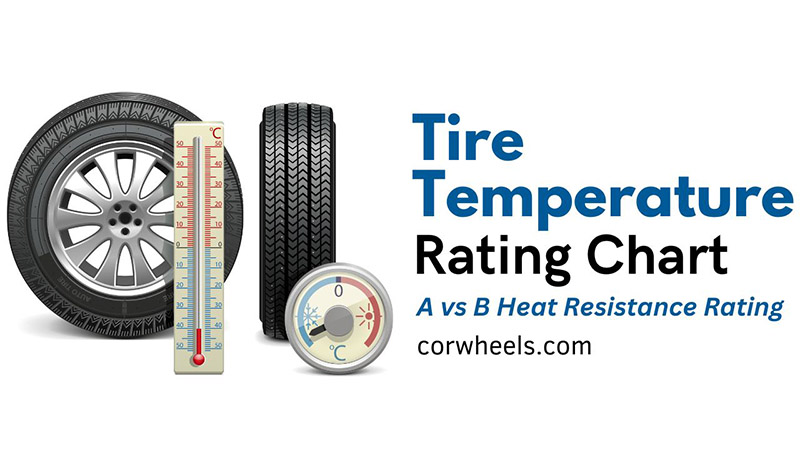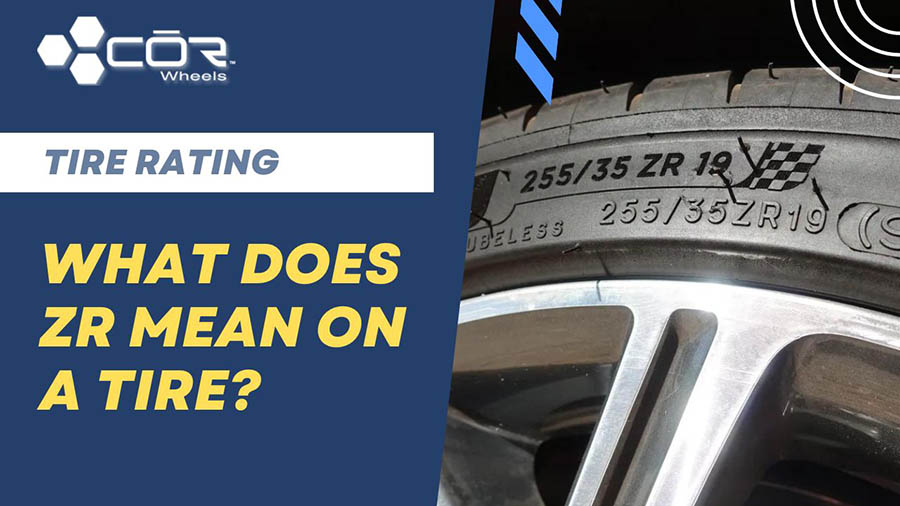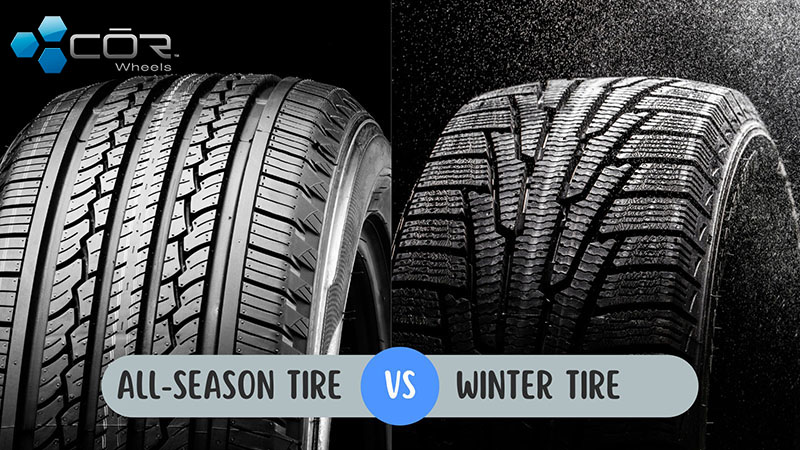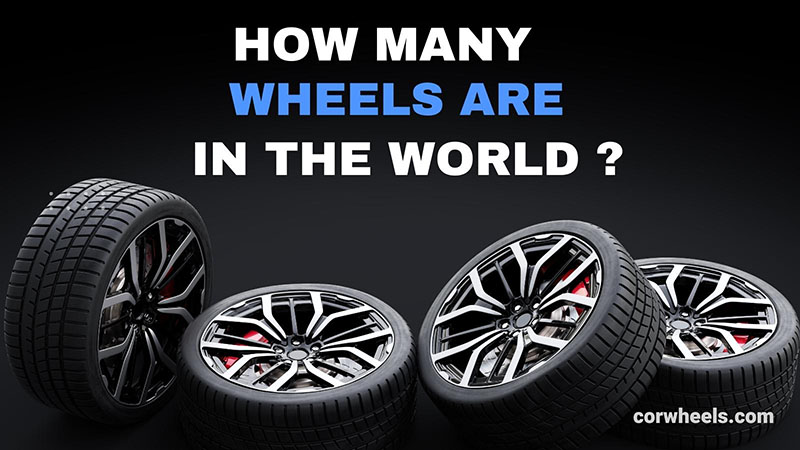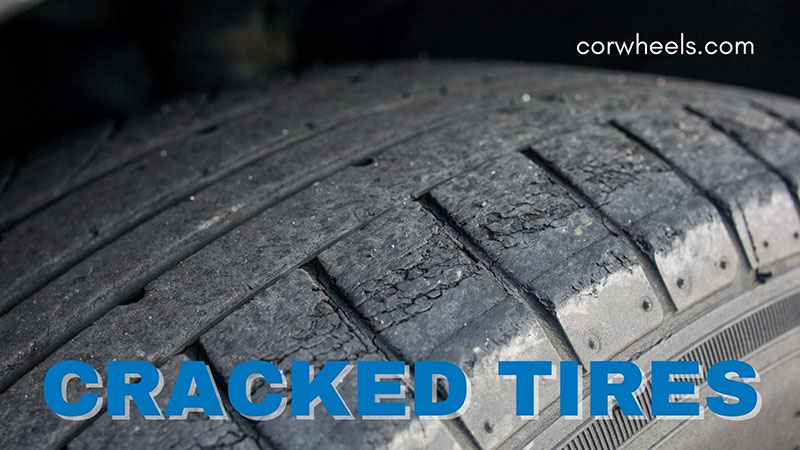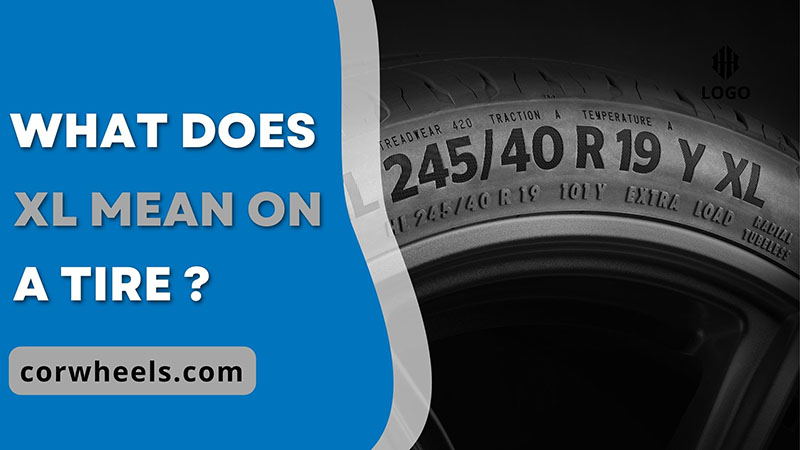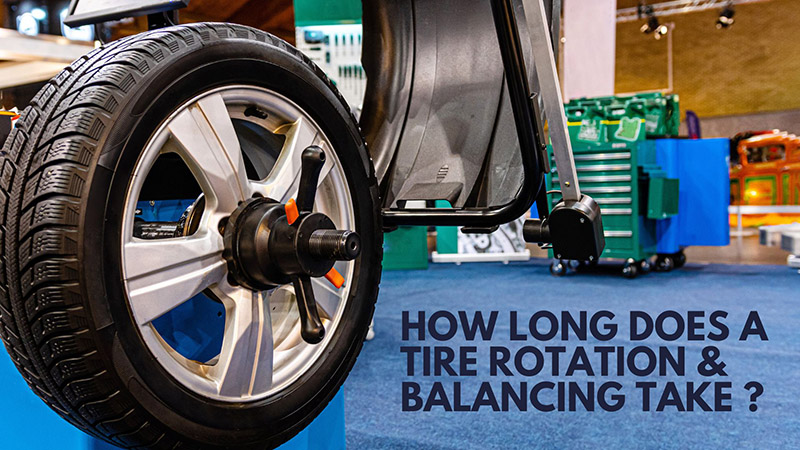When selecting new tires for your car, tire heat rating is a crucial consideration. It shows whether or not the tire model can sustain high temperatures without being harmed or failing.
You may choose the ones that are suitable for your driving circumstances by being aware of the tire ratings system, helping you achieve the best performance and safety on the road.
In this article:
What Do Temperature Rating Tires Mean?
The tire temperature rating reveals how well it can withstand heat build-up and keep its structural integrity when working at high temperatures.
The type of tire with a higher temperature rating can drain heat more effectively, lowering the possibility of blowouts and tire failure brought on by overheating. The rating is indicated by a letter grade code on the tire sidewall, with A being the highest and C being the lowest.
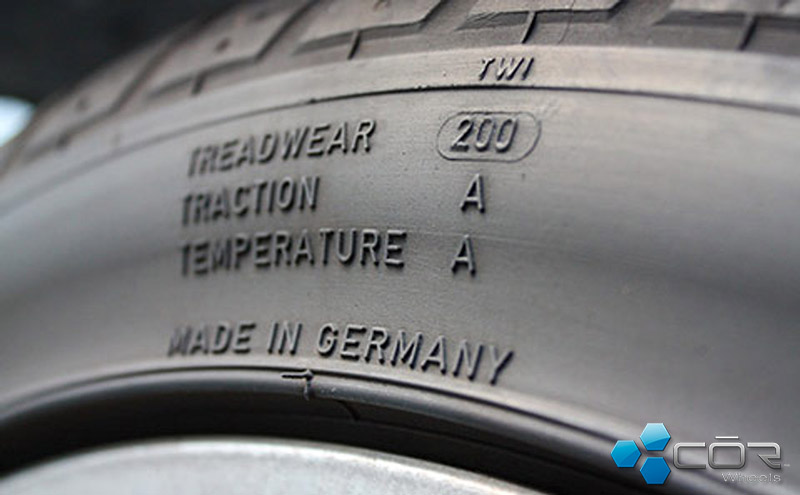
The tire manufacturer assigns temperature ratings to tires. The tire’s resistance and capacity to dissipate heat are measured in laboratory test conditions to determine the tire’s proper temperature rating.
These ratings are based on industry and federal safety standards established by groups like the European Tyre and Rim Technical Organization (ETRTO) and UTQG by the U.S. Department of Transportation (DOT).
To find the tire temperature rating, look for the letters A, B, or C on the tire sidewall. This rating is typically located next to the tire’s load index and speed rating.
Relation Between Temperature And Speed Rating
A tire’s temperature and speed ratings are two separate but related factors that affect its performance and safety. The former rating indicates the tire’s ability to dissipate heat and maintain its structural integrity under high operating temperatures. Meanwhile, the speed rating indicates the tire’s high-speed capability.
These two ratings have a mutual relationship since a tire’s heat generation increases with operating speed, making a high heat resistance rating for the tire more critical. For example, a tire with an S speed rating can safely operate at speeds up to 112 mph. Meanwhile, 149 mph is the maximum for a V tire grading.
However, when the tires operate at their maximum safe speeds, they generate more heat. This makes choosing the model with a high-temperature rating crucial to avoid tire failure and blowouts.
Tire Temperature Rating Chart
The Department of Transportation (DOT) devised a grading system called the tire temperature grade chart to show how well it can tolerate extreme temperatures. The chart is broken down into three distinct tire categories: A, B, and C. Check the table below for better insight.
| Rating | Speed | Temperature range |
| A | More than 115 mph | Up to 120°C (249°F) |
| B | 100 to 115 mph | Up to 110°C (230°F) |
| C | 85 to 100 mph | Up to 100°C (212°F) |
Remember that the temperatures listed on this chart are the highest temperatures that the tire can endure before failing. To avoid drastically shortening tire life and performance, it is advised to drive carefully and stay out of the sun and heat.
What Is A Good Tire Temperature Rating?
A good tire temperature rating is the one that can withstand high temperatures without suffering damage or failure. The max tire temperature rating is an A rating, meaning the A-rated tire can resist temperatures of up to 120°C (249°F) without taking a toll on itself.
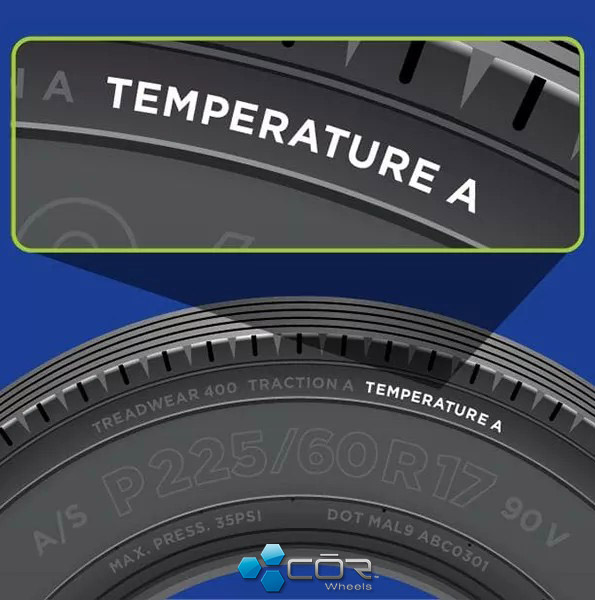
The tire temperature rating B is also acceptable and indicates that this B-rated tire can handle temperatures up to 110°C (230°F) without issues.
Notice that the higher the tire temperature rating, the better the tire’s ability to handle high temperatures. This helps prolong the tire’s lifespan and ensure optimal safety and performance on the road.
As a result, this means between tire temperature rating A vs B, the former is the better grade.
But A-rated tires are not always good. For example, we use Michelin Defender LTX tires with an A temperature grade and A traction rating since summer in our state – Illinois – is quite hot.
But when winter comes with the first snowfall, that tire set couldn’t provide us with enough traction, so we have to switch to winter tires with an AA traction rating and a B temperature rating for better grip on slushy roads.
Frequently Asked Questions
Is Tire Temperature Rating B Good?
A tire temperature rating of B is regarded as a moderate rating because it falls between the highest and lowest ratings, A and C. This means it can withstand temperatures up to 110°C (230°F) without suffering serious harm or failure.
Is Tire Traction A Or B Better?
A tire with a surface traction rating of A is better than one with B rating. The former type can stop on wet roads at a shorter distance, which is important for safety. It also usually has better rubber compounds, tread designs, and other features that increase its grip on the road surface.
How Many Miles Is A 700 Treadwear Rating?
A treadwear rating of 700 is expected to last 70,000 miles under normal driving conditions. Yet, keep in mind that the actual mileage may vary depending on several external factors, such as driving habits, road conditions, vehicle type, and maintenance.
The Bottom Line
A key aspect to take into account when selecting new tires is the tire temperature rating. It establishes the tire’s capacity to withstand high temperatures without breaking down or incurring damage.
Suppose you are still unsure which one is the best; the rule of thumb is that the tire temperature A is the best safety rating. To maintain the highest level of safety and performance, be sure to verify the temperature rating of your tires and select ones suitable for your actual conditions.

